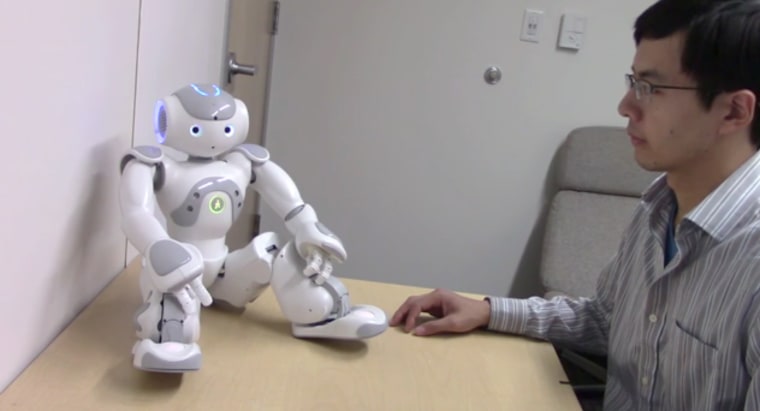In a first for mechanical man, scientists have revealed that humans get aroused by touching robots. Researchers at Stanford University studying the physiological impact of human-on-bot contact found that “touching areas perceived as private made the skin more moist.”
The team of scientists programmed a two-foot-tall robot — part Michelin Man, part Wall-E — to command four female and six male subjects to touch various parts of its body. Study participants wore finger sensors to measure arousal and reaction time.
When asked to touch a neutral, easily accessible part of the body such as the hand, there was no marked response. However, when instructed to touch the robot’s buttocks, participants not only took longer to respond but showed a “measurable increase” in skin conductance, or high emotional arousal. The researchers found that “physiological arousal was inversely related to accessibility” — meaning that touching bottoms came up tops.
Read More: Your Job Might Be One of 5 Million Replaced by Robots by 2020
"Our work shows that robots are a new form of media that is particularly powerful. It shows that people respond to robots in a primitive, social way," said researcher Jamy Li in the study conclusion. "Social conventions regarding touching someone else's private parts apply to a robot's body parts as well. This research has implications for both robot design and theory of artificial systems."
Far from futuristic fantasy, A.I. robots are increasingly becoming a larger part of our reality, and the study findings provide valuable insight into the extent to which humans will feel comfortable interacting with humanoids and their anthropomorphic anatomy.
In the offing right now: The hit TV series "Humans" explores the ways in which highly developed robots could transform — or disrupt — the rule of homo sapiens; Hilton Hotels has a robot concierge named Connie, who can respond to guests' queries and give directions; the movie "Ex Machina" focused on the dilemma of programming a robot to follow all commands, yet have a mind of its own; and a Hong Kong-based inventor recently debuted a home-made Scarlett Johansson doppelganger humanoid who can (somewhat creepily) smile and engage in conversation.
Read More: Google's 'Next Generation' Atlas Robot Turns Heads
The Stanford team will present the full findings of its study at the 66th Annual Conference of the International Communication Association in Fukuoka, Japan, in June.

